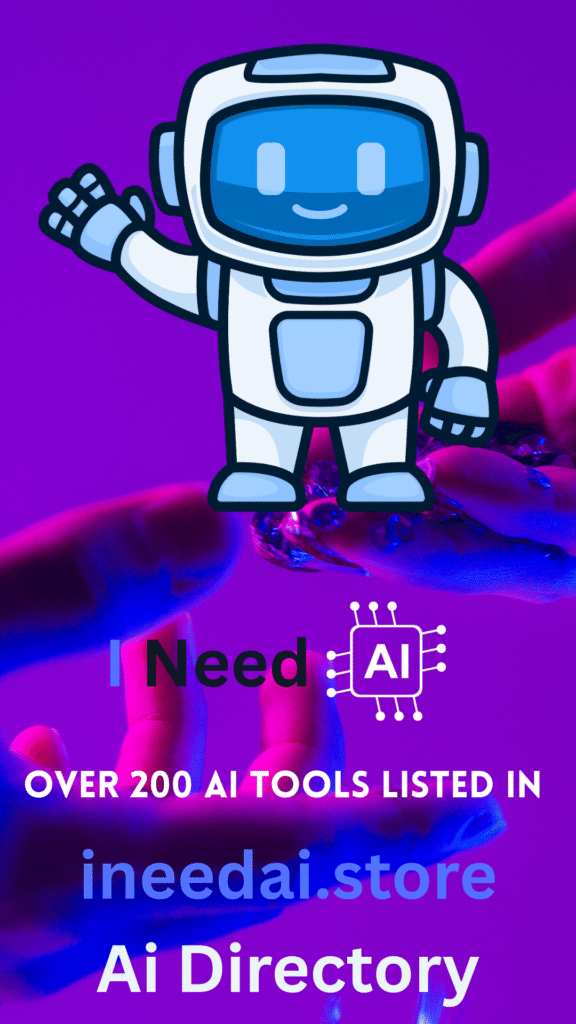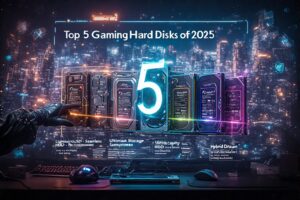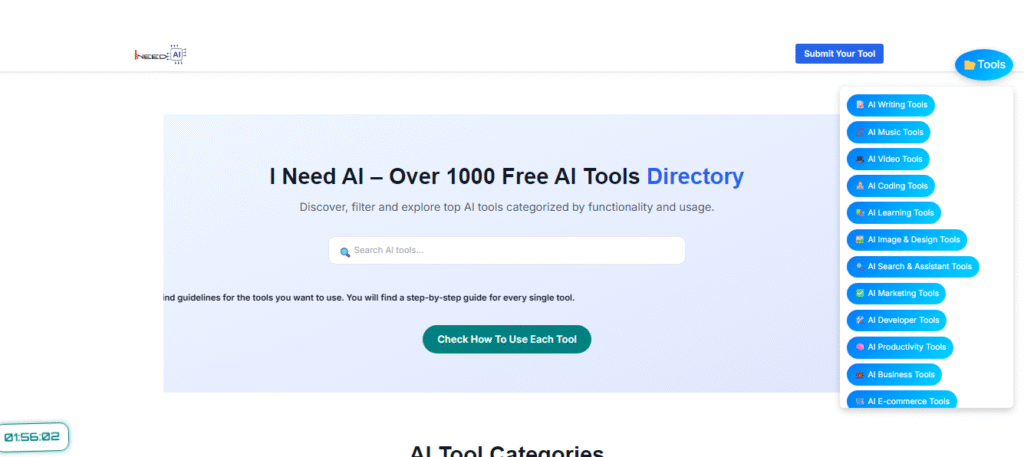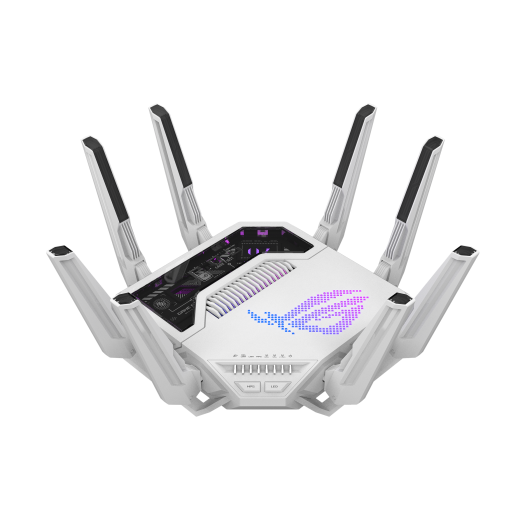Ignoring copyright laws is a significant mistake that gaming content creators should absolutely avoid on YouTube. Let’s delve deeper into why this is so crucial and what creators need to be aware of…
Table of Contents
ToggleUnderstanding Copyright Basics
Copyright law grants creators of original works exclusive rights to their creations, including the right to reproduce, distribute, and publicly display their work. This protection extends to various forms of content, including music, images, videos, and even gameplay footage.
- What is Copyright? Copyright is a form of legal protection granted to creators of original works, granting them exclusive rights to their creations for a limited period. Copyright protection applies to various types of creative works, including literary works, music, artwork, films, and video games.
- Rights Granted by Copyright: Copyright grants creators several exclusive rights over their works, including:
- The right to reproduce the work.
- The right to distribute copies of the work to the public.
- The right to perform or display the work publicly.
- The right to create derivative works based on the original.
- Duration of Copyright Protection: The duration of copyright protection varies depending on the type of work and the jurisdiction. In many countries, copyright protection lasts for the life of the author plus an additional period (e.g., 70 years) after the author’s death. For works created by corporations or under pseudonyms, copyright protection may last for a predetermined period from the date of creation or publication.
- Copyrightable Works: Copyright protection extends to a wide range of creative works, including:
- Literary works: Books, articles, scripts, and written content.
- Musical works: Songs, compositions, and musical scores.
- Artistic works: Paintings, drawings, sculptures, and photographs.
- Audiovisual works: Films, videos, animations, and video games.
- Dramatic works: Plays, scripts, and theatrical performances.
- Architectural works: Building designs and blueprints.
- Software: Computer programs and code.
- Copyright Ownership: In general, the creator or author of a work is the initial owner of the copyright. However, there are exceptions, such as works made for hire, where the employer or commissioning party owns the copyright. Additionally, joint authorship may occur when multiple individuals contribute to a work, leading to shared ownership of the copyright.
- Copyright Registration: Copyright protection is automatic upon the creation of a qualifying work; registration with a government copyright office is not required. However, registering a copyright can provide additional benefits, such as evidence of ownership, the ability to file lawsuits for infringement, and eligibility for statutory damages and attorney’s fees in court cases.
- Fair Use Doctrine: Fair use is a legal doctrine that allows the limited use of copyrighted material without permission from the copyright holder under certain circumstances, such as criticism, commentary, news reporting, teaching, scholarship, or research. Fair use is determined on a case-by-case basis and considers factors such as the purpose and character of the use, the nature of the copyrighted work, the amount used, and the effect on the potential market.
- International Copyright Protection: Copyright protection is territorial, meaning it is granted and enforced based on the laws of each country or jurisdiction. However, international agreements such as the Berne Convention and the TRIPS Agreement establish minimum standards of copyright protection among member countries, facilitating mutual recognition and enforcement of copyright rights across borders.
It depends on various factors, including the game developer’s policies, the content of your video, and applicable copyright laws. In some cases, using gameplay footage for commentary, criticism, or transformative purposes may qualify as fair use. However, if you’re unsure about the legality of using gameplay footage, it’s advisable to seek legal advice to assess the risks and explore licensing options.
To mitigate the risk of copyright infringement, creators should obtain proper licenses or permissions for third-party content, such as music, images, or gameplay footage. Additionally, creators can seek legal advice to ensure compliance with copyright laws, understand fair use principles, and implement strategies to minimize legal exposure.
If you receive a copyright takedown notice or claim on your content, it’s essential to take prompt action to address the issue. This may involve reviewing the validity of the claim, considering options for disputing or counterclaiming the notice, or seeking legal advice to assess your rights and obligations under copyright law. Acting quickly and seeking legal guidance can help resolve disputes effectively while minimizing potential consequences.
Consequences of Copyright Infringement
YouTube takes copyright infringement very seriously and has implemented robust systems to detect and address it. If your videos contain copyrighted material without proper authorization or licensing, you may receive a copyright strike, which can result in severe penalties. Accumulating multiple strikes could lead to your channel being terminated altogether.
- Legal Action:
Copyright holders have the right to take legal action against individuals or entities that infringe on their copyright. This may involve sending cease-and-desist letters, filing copyright takedown notices with online platforms, or pursuing civil litigation for damages. - Monetary Damages:
If found liable for copyright infringement, creators may be required to pay monetary damages to the copyright holder. Damages can include actual damages suffered by the copyright holder, profits gained from the infringement, or statutory damages set by law. - Account Suspension or Termination:
Online platforms, such as YouTube, Twitch, or social media networks, have policies and procedures in place to address copyright infringement. Violating these platforms’ copyright policies may result in account suspension, termination, or the removal of infringing content. - Loss of Revenue:
Content creators who monetize their videos through advertising, sponsorships, or other means may experience a loss of revenue if their content is removed due to copyright infringement. Additionally, revenue earned from infringing content may be forfeited to the copyright holder. - Damage to Reputation:
Copyright infringement can damage a creator’s reputation and credibility within the gaming community and among their audience. Violating copyright laws may be perceived as unethical or dishonest behavior, leading to distrust or disapproval from viewers and peers. - Limited Future Opportunities:
Copyright infringement can limit a creator’s future opportunities for collaboration, sponsorship deals, or partnerships with brands, game developers, or other content creators. Companies may be hesitant to associate themselves with individuals known for copyright violations. - Loss of Creative Control:
In some cases, creators may be required to remove or modify their content to comply with copyright laws or avoid further legal action. This loss of creative control can hinder the creator’s ability to express themselves freely or create the content they envision. - Legal Precedent:
A copyright infringement case against a content creator can set a legal precedent that affects how copyright laws are interpreted and enforced in future cases. This precedent may impact the rights and responsibilities of creators and copyright holders alike. - Repeat Offender Penalties:
Repeat instances of copyright infringement may result in harsher penalties, such as increased damages, longer account suspensions, or permanent bans from online platforms. Platforms may implement stricter enforcement measures for users with a history of copyright violations.
Types of Copyrighted Content in Gaming Videos
Gaming content creators often encounter copyrighted material in their videos, particularly in the form of background music, sound effects, or gameplay footage from other games. Additionally, using images, logos, or trademarks without permission can also constitute copyright infringement.
- Gameplay Footage: Gameplay footage captures the gameplay experience of a video game, including in-game scenes, characters, environments, and interactions. The game itself, along with all its audiovisual elements, is typically protected by copyright law, owned by the game developer or publisher.
- Music and Sound Effects: Video games often feature original soundtracks, ambient music, sound effects, and voice acting, all of which are copyrighted by the game developers or composers. Additionally, creators may incorporate third-party music or sound effects into their videos, which may require proper licensing or permission.
- Artwork and Graphics: Video games contain various artistic elements, such as character designs, concept art, textures, and visual effects, all of which are subject to copyright protection. Using screenshots, concept art, or other visual assets from games in videos may implicate copyright issues.
- Logos and Branding: Many video games feature logos, trademarks, and branding elements associated with the game’s title, developer, publisher, or affiliated companies. Incorporating these logos or branding elements into videos without authorization may infringe on intellectual property rights.
- Dialogue and Narratives: Story-driven games often contain scripted dialogue, narratives, plotlines, and character development, all of which are protected by copyright law. Reusing dialogue or narrating story elements from games in videos may raise copyright concerns.
- Mods and User-Generated Content: Mods (modifications) and user-generated content (UGC) created by players or third-party developers may introduce additional copyrighted material into gaming videos. While some mods and UGC may be freely distributed or allowed under specific terms, others may contain copyrighted content that requires proper authorization.
- Advertisements and Promotional Material: Video games may contain advertisements, promotional trailers, or marketing materials created by the game developers or publishers to promote the game or related products. Using these materials in videos may require permission from the copyright holders.
- Licensed Content within Games: Some video games incorporate licensed content from third-party intellectual properties, such as music tracks, character crossovers, or product placements. Creators need to consider the licensing terms and restrictions associated with these third-party assets when featuring them in their videos.
- DLC and Expansion Packs: Downloadable content (DLC) and expansion packs released for video games often contain additional copyrighted material, including new gameplay features, storylines, characters, and assets. Using DLC or expansion content in videos may involve additional copyright considerations.
- Live Streaming and Broadcasting: When live streaming or broadcasting gameplay footage on platforms like Twitch or YouTube Gaming, creators may encounter copyright issues related to music playing in the background, in-game soundtracks, or content identification systems implemented by platform operators.
Fair Use and Transformative Content
While copyright law protects the rights of creators, it also recognizes the concept of fair use. Fair use allows for the limited use of copyrighted material for purposes such as commentary, criticism, news reporting, teaching, and research. However, it’s essential to understand that fair use is a complex legal doctrine with specific criteria that must be met.
- Understanding Fair Use: Fair use is a flexible and context-specific doctrine rooted in the U.S. Copyright Act’s Section 107. It considers four factors when determining whether the use of copyrighted material qualifies as fair:
- The purpose and character of the use, including whether it’s transformative or commercial.
- The nature of the copyrighted work.
- The amount and substantiality of the portion used in relation to the copyrighted work as a whole.
- The effect of the use on the potential market for or value of the copyrighted work.
- Applying Fair Use to Gaming Content: Gaming content creators can invoke fair use to incorporate copyrighted material into their videos under certain circumstances, such as:
- Critiquing or analyzing a game’s mechanics, storyline, graphics, or other elements.
- Providing commentary, reviews, or reactions to gameplay footage.
- Using short clips or excerpts of copyrighted material to illustrate a point or support an argument.
- Parodying or satirizing copyrighted works in a transformative manner.
- Creating Transformative Content: Transformative content involves recontextualizing or repurposing copyrighted material in a way that adds significant value, commentary, or artistic expression beyond the original work. Gaming content creators can create transformative content by:
- Adding original commentary, analysis, or narration to gameplay footage to provide insights or entertainment.
- Editing gameplay footage to highlight specific aspects of a game or to create a unique storytelling experience.
- Incorporating gameplay footage into larger creative projects, such as documentaries, educational videos, or artistic montages.
- Remixing or reimagining gameplay footage to create new narratives, characters, or experiences.
- Factors Influencing Fair Use and Transformative Content: When determining whether the use of copyrighted material qualifies as fair use or transformative, creators should consider various factors, including:
- The purpose and character of their use, such as whether it’s transformative, non-commercial, or for educational purposes.
- The nature of the copyrighted work, including its creativity, publication status, and commercial value.
- The amount and substantiality of the portion used in relation to the copyrighted work as a whole, with shorter excerpts generally more likely to qualify as fair use.
- The potential market impact of the use on the copyrighted work’s commercial value or licensing opportunities.
- Mitigating Risk and Legal Considerations: While fair use and transformative content provide valuable exceptions to copyright law, creators should be mindful of potential legal risks and consider taking proactive steps to mitigate them, such as:
- Providing proper attribution to the original copyright holder when using their material.
- Limiting the amount and substantiality of copyrighted material used to what is necessary for the transformative purpose.
- Seeking legal advice or guidance if unsure about the applicability of fair use or transformative content principles to their specific situation.
Obtaining Proper Licenses and Permissions
To avoid copyright infringement, gaming content creators should obtain proper licenses or permissions for any third-party content they use in their videos. This includes obtaining licenses for background music, securing permission from game developers to use gameplay footage, and ensuring that any images or logos used are either royalty-free or properly licensed.
- Understanding Licensing and Permissions: Licensing refers to the legal agreement between the copyright holder (licensor) and the user (licensee) that grants permission to use the copyrighted material under specific terms and conditions. Permissions involve seeking authorization from the copyright holder to use their work in a particular way, whether it’s through a license agreement, written consent, or other means.
- Identifying Third-Party Content: Before using any third-party content in their videos, gaming content creators need to identify the type of material they intend to use, such as music, images, videos, or gameplay footage. It’s crucial to determine whether the content is protected by copyright and whether permission or a license is required for its use.
- Researching Licensing Options: Once creators identify the third-party content they wish to use, they should research the available licensing options to obtain the necessary permissions. Common licensing options include:
- Royalty-Free Licenses: Royalty-free licenses grant creators the right to use the content without paying royalties or additional fees, typically for a one-time purchase or subscription fee.
- Creative Commons Licenses: Creative Commons licenses provide standardized permissions for creators to share their work with others, allowing for various uses depending on the specific license chosen.
- Commercial Licenses: Some content creators or copyright holders offer commercial licenses that allow for the use of their work in commercial projects, such as monetized YouTube videos, in exchange for a licensing fee.
- Custom Licenses: In some cases, creators may need to negotiate custom licensing agreements directly with copyright holders to obtain permission for specific uses not covered by standard licenses.
- Obtaining Licenses and Permissions: Once creators identify the appropriate licensing option, they can proceed to obtain the necessary licenses or permissions through the following steps:
- Purchase or Subscription: For royalty-free or commercial licenses, creators can typically purchase the license or subscribe to a service that grants access to a library of licensed content.
- License Agreement: Review the terms of the license agreement carefully to ensure compliance with any usage restrictions, attribution requirements, or other conditions specified by the licensor.
- Permission Requests: If seeking permission directly from the copyright holder, creators should send a formal permission request outlining the intended use of the content and any relevant details, such as duration, territory, and compensation (if applicable).
- Written Consent: In some cases, creators may receive written consent or authorization from the copyright holder granting permission to use their work in a specific manner. It’s essential to retain documentation of any permissions obtained for future reference.
- Adhering to License Terms: Once creators obtain the necessary licenses or permissions, it’s crucial to adhere to the terms and conditions outlined in the license agreements or permission grants. This may include providing attribution to the original creator, complying with usage restrictions, and ensuring that the content is used only as permitted by the license.
- Keeping Records: Creators should maintain detailed records of the licenses obtained and permissions granted for each piece of third-party content used in their videos. This documentation serves as proof of compliance with copyright laws and can be invaluable in case of any disputes or legal issues.
Utilizing Royalty-Free Resources
Many creators opt to use royalty-free resources, such as music, sound effects, and images, to avoid copyright issues altogether. There are numerous websites and platforms that offer high-quality royalty-free content for creators to use in their videos without worrying about copyright infringement.
- Understanding Royalty-Free Content: Royalty-free content refers to creative works—such as music, images, videos, and sound effects—that are licensed for unlimited use without the need to pay royalties or additional fees for each use. Once you obtain a royalty-free resource, you can typically use it in your videos without restrictions, as long as you adhere to the terms of the license.
- Types of Royalty-Free Resources:
- Music: Royalty-free music libraries offer a vast selection of tracks in various genres, styles, and moods that creators can use in their videos without worrying about copyright issues.
- Images: Websites like Unsplash, Pixabay, and Pexels provide high-quality, royalty-free images that creators can incorporate into their videos to enhance visual appeal.
- Videos: Some platforms offer royalty-free stock footage and video clips that creators can use to supplement their own footage or create montages.
- Sound Effects: From ambient sounds to special effects, royalty-free sound effect libraries provide a plethora of audio resources to enhance the immersive experience of gaming videos.
- Benefits of Royalty-Free Resources:
- Legal Compliance: Royalty-free resources come with clear licensing terms that allow creators to use them in their videos without worrying about copyright infringement.
- Cost-Effectiveness: Many royalty-free resources are available for free or at a relatively low cost, making them accessible to creators with varying budgets.
- Variety and Quality: Royalty-free libraries offer a wide range of content, including music tracks, images, videos, and sound effects, ensuring that creators can find suitable resources for their specific needs.
- Convenience: With royalty-free resources readily available online, creators can quickly find and download content to enhance their videos without the hassle of seeking individual permissions or negotiating licensing agreements.
- Finding Royalty-Free Resources:
- Royalty-Free Music Libraries: Platforms like Epidemic Sound, Artlist, and PremiumBeat offer extensive libraries of royalty-free music tracks tailored for various genres and moods.
- Stock Photo Websites: Websites like Unsplash, Pixabay, and Pexels provide vast collections of royalty-free images that creators can use in their videos.
- Video Libraries: Platforms such as Shutterstock, Adobe Stock, and Pond5 offer royalty-free stock footage and video clips for creators to incorporate into their projects.
- Sound Effect Libraries: Websites like SoundBible, Freesound, and ZapSplat offer royalty-free sound effects ranging from nature sounds to sci-fi effects.
- Attribution and License Compliance: While royalty-free resources generally do not require payment of royalties, creators must still comply with the terms of the licenses, which may include providing attribution to the original creator or adhering to specific usage restrictions. It’s essential to carefully review the licensing terms of each resource and ensure compliance to avoid any legal issues.
Taking Advantage of Creative Commons
Creative Commons licenses provide a flexible framework for creators to share their work with specific permissions and conditions. Content creators can search for Creative Commons-licensed material that aligns with their needs and use it in their videos while adhering to the terms of the license.
- Understanding Creative Commons Licenses: Creative Commons licenses provide a range of permissions that creators can choose from to dictate how others can use their work. These permissions include whether the work can be shared, modified, used commercially, or distributed under the same license.
- Types of Creative Commons Licenses: There are several types of Creative Commons licenses, each offering different levels of permissions:
- Attribution (CC BY): Allows others to distribute, remix, adapt, and build upon the work, even commercially, as long as they give appropriate credit to the original creator.
- Attribution-ShareAlike (CC BY-SA): Similar to CC BY but requires derivative works to be distributed under the same license as the original.
- Attribution-NoDerivatives (CC BY-ND): Permits others to redistribute the work, even commercially, but they cannot modify it in any way.
- Attribution-NonCommercial (CC BY-NC): Allows others to remix, adapt, and build upon the work non-commercially, as long as they credit the original creator.
- Attribution-NonCommercial-ShareAlike (CC BY-NC-SA): Similar to CC BY-NC but requires derivative works to be distributed under the same license.
- Attribution-NonCommercial-NoDerivatives (CC BY-NC-ND): The most restrictive license, allowing others to download the work and share it with others as long as they credit the original creator, but they cannot change it in any way or use it commercially.
- Finding Creative Commons Content: Various platforms and websites host Creative Commons-licensed content that creators can use in their videos:
- Creative Commons Search: The Creative Commons organization provides a search engine that allows users to find CC-licensed content across multiple platforms, including Flickr, Wikimedia Commons, and YouTube.
- Flickr: Many photographers upload their images to Flickr under Creative Commons licenses, making it a valuable resource for finding high-quality photos for use in videos.
- Free Music Archive: This platform offers a vast collection of music tracks that are available under Creative Commons licenses, allowing creators to find suitable background music for their videos.
- OpenGameArt: For gaming content creators, OpenGameArt provides a repository of game assets, including sprites, textures, and sound effects, that are released under Creative Commons licenses.
- Complying with Creative Commons Licenses: When using Creative Commons-licensed content in videos, it’s essential to comply with the terms of the license:
- Provide proper attribution to the original creator as specified in the license.
- Adhere to any additional conditions outlined in the license, such as not using the work for commercial purposes or distributing derivative works under the same license.
- Benefits of Using Creative Commons Content: Utilizing Creative Commons-licensed content offers several benefits for gaming content creators:
- Access to a vast array of high-quality resources without the need to create everything from scratch.
- Legal certainty and peace of mind, as long as the terms of the licenses are followed.
- Contribution to the Creative Commons community by sharing and remixing works created by others.
Creative Commons licenses provide gaming content creators with a valuable resource for finding and using a wide range of content in their videos while respecting the rights of the original creators. By understanding the different types of licenses, finding CC-licensed content through various platforms, complying with license terms, and acknowledging the original creators, gaming content creators can enhance their videos with compelling visuals, music, and other elements while adhering to legal standards.
Seeking Legal Advice if Uncertain
If you’re unsure whether your use of copyrighted material constitutes fair use or if you need to obtain proper licenses, it’s advisable to seek legal advice. Consulting with a qualified attorney who specializes in copyright law can provide clarity and guidance on how to navigate copyright issues effectively.
- Complexity of Copyright Law: Copyright law is complex and nuanced, with various factors influencing its application, such as fair use, transformative content, licensing agreements, and international regulations. Legal professionals specializing in intellectual property law can provide clarity and guidance tailored to the specific circumstances of a creator’s situation.
- Risk Mitigation: Seeking legal advice helps creators mitigate the risk of copyright infringement and potential legal consequences. By consulting with legal experts, creators can assess the legality of their actions, identify potential risks, and implement strategies to minimize legal exposure.
- Protection of Rights: Legal advice empowers creators to protect their own intellectual property rights and navigate disputes involving copyright infringement or unauthorized use of their works. Legal professionals can advise on strategies for enforcing copyrights, responding to infringement claims, and safeguarding creative assets.
- Compliance with Regulations: Legal advisors assist creators in understanding and complying with applicable laws, regulations, and industry standards related to content creation, distribution, and monetization. Staying informed about legal requirements helps creators operate within legal boundaries and maintain ethical standards.
- Resolution of Disputes: In the event of disputes or legal challenges, legal counsel can provide representation and advocacy on behalf of creators, whether in negotiations, mediation, or litigation. Legal professionals advocate for creators’ interests and work towards favorable resolutions to disputes.
- How to Seek Legal Advice: Creators can seek legal advice through various means, including:
- Hiring an Attorney: Engaging an attorney who specializes in intellectual property law or entertainment law provides personalized legal advice and representation tailored to the creator’s needs.
- Legal Clinics: Some universities, law schools, or nonprofit organizations offer legal clinics or pro bono services where creators can receive free or low-cost legal assistance from law students or practicing attorneys.
- Legal Resources: Online legal resources, such as legal blogs, forums, and websites, may provide general information and guidance on copyright law, although creators should exercise caution and verify information from reputable sources.
- Professional Organizations: Membership in professional organizations, such as the International Game Developers Association (IGDA) or the Entertainment Software Association (ESA), may provide access to legal resources, workshops, or networks of legal professionals specializing in the gaming industry.
Ignoring copyright laws can have severe consequences for gaming content creators on YouTube. By understanding the basics of copyright law, obtaining proper licenses and permissions, utilizing royalty-free and Creative Commons resources, and seeking legal advice when necessary, creators can protect themselves from copyright infringement and ensure that their content complies with legal standards.












